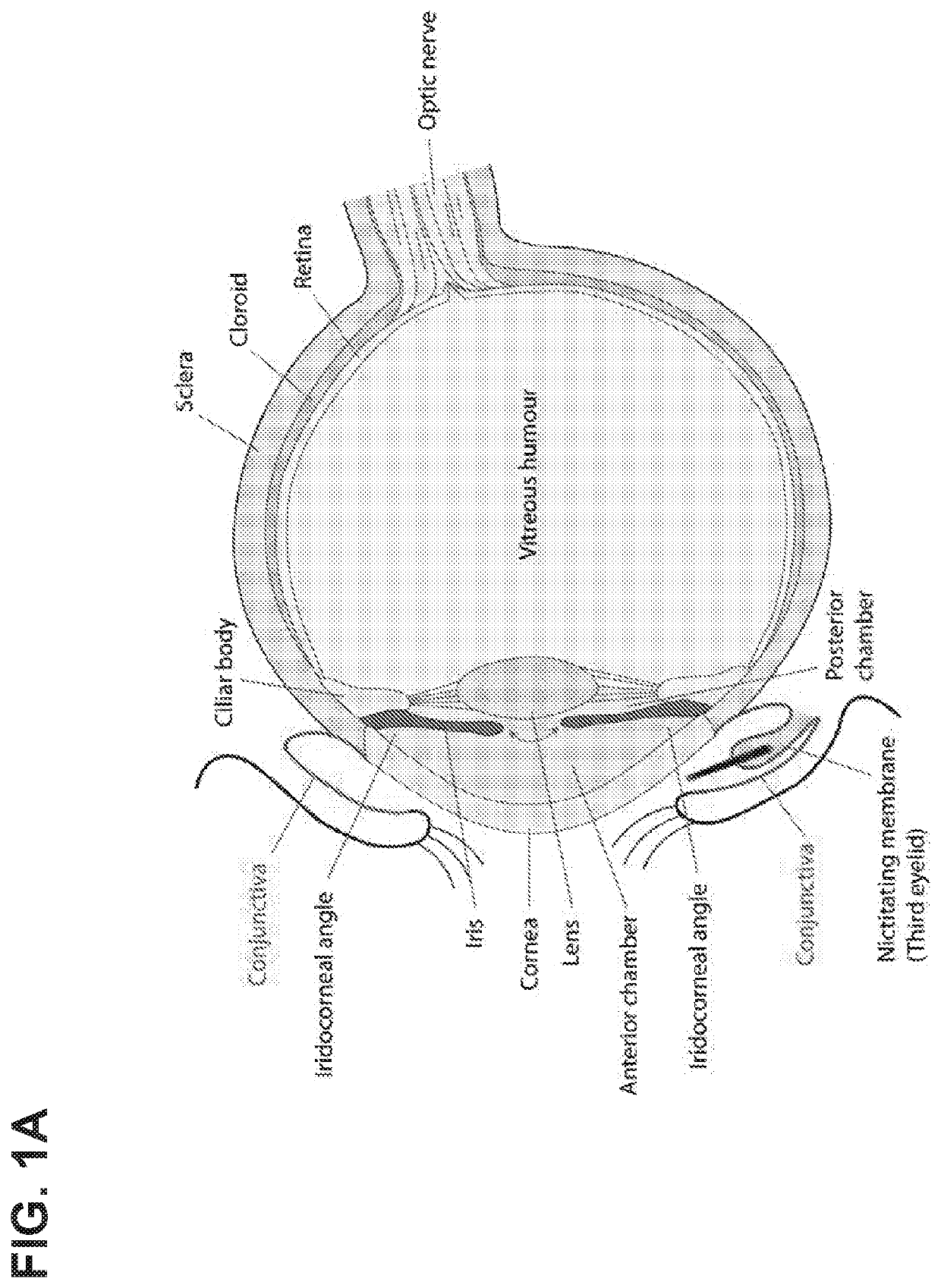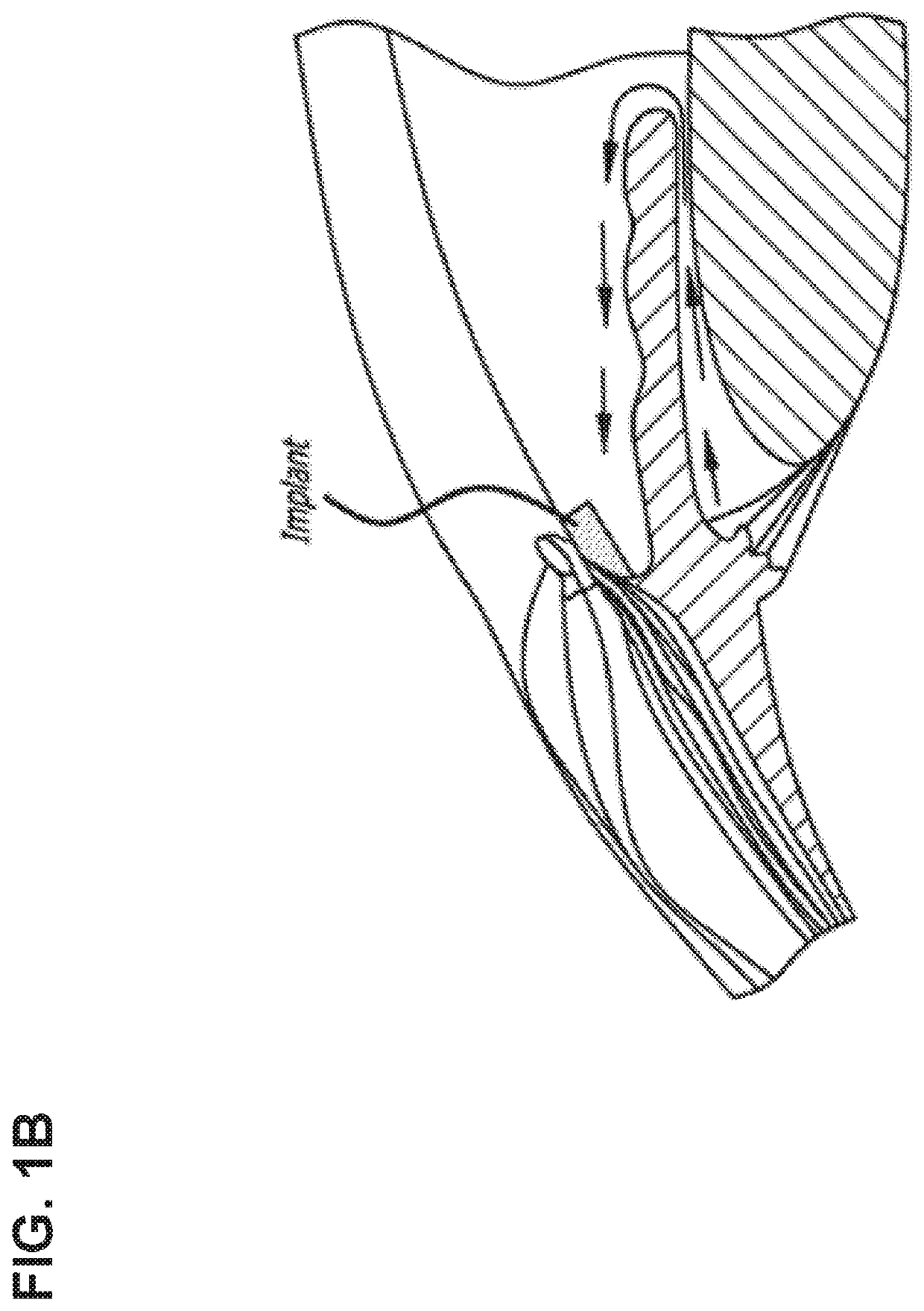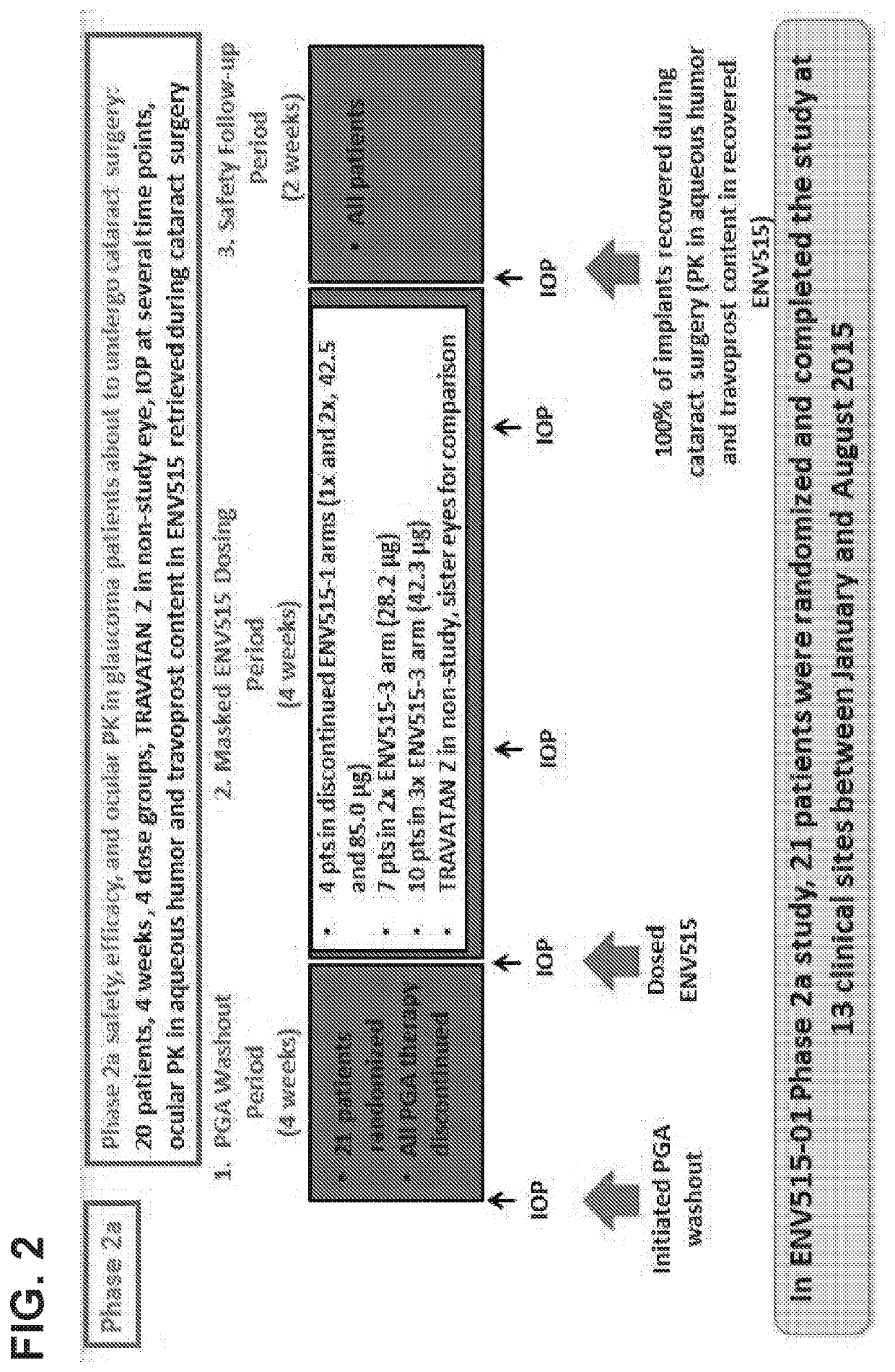Glaucoma Treatment Via Intracameral Ocular Implants
- Summary
- Abstract
- Description
- Claims
- Application Information
AI Technical Summary
Benefits of technology
Problems solved by technology
Method used
Image
Examples
example 1
on of Polymer Matrix / Therapeutic Agent Blends
[0266]The polymer matrix / therapeutic agent blend was prepared prior to fabrication of implants. Acetone was used to dissolve the polymers and therapeutic agent to create a homogeneous mixture. The polymer blend contained travoprost as the therapeutic agent. The resulting solution was aseptically filtered. After filtering, the acetone was evaporated leaving a thin film of homogeneous material. Table 2 details the composition of the various blends.
TABLE 2Polymer Matrix / Therapeutic Agent Blend RatiosR 208R 203 SPolymer Matrix(PLA)(PLA)TravoprostIDBlendwt %wt %wt %515-3R203S / R20844.2121.8333.96(also termed33% / 67%ENV515-3)515-1R203S / R20844.8622.1433.00(also termed33% / 67%ENV515-1)
example 2
on of Molds
[0267]A mold of appropriate dimensions was created with the PRINT™ process. The mold had dimensions of 150 μm×150 μm×1,500 μm (ENV515-3) or 225 μm 225 μm×2,925 μm (ENV515-1).
example 3
abrication Via PRINT™
[0268]Implants were fabricated utilizing the polymer matrix / therapeutic agent blends of Example 1 and the molds of Example 2. Under aseptic conditions, a portion of polymer matrix / therapeutic agent blend was spread over a PET sheet and was heated for approximately 30 to 90 seconds until fluid. Once heated, the blend was covered with the mold of Example 2 which had the desired dimensions. Light pressure was applied using a roller to spread the blend over the mold area. The mold / blend laminate was then passed through a commercially available thermal laminator using the parameters in Table 3 below. The blend flowed into the mold cavities and assumed the shape of the mold cavities. The blend was allowed to cool to room temperature and created individual implants in the mold cavities. The mold was then removed leaving a two-dimensional array of implants resting on the film. Individual implants were removed from the PET film utilizing forceps.
TABLE 3Implant Fabricatio...
PUM
| Property | Measurement | Unit |
|---|---|---|
| Fraction | aaaaa | aaaaa |
| Fraction | aaaaa | aaaaa |
| Mass | aaaaa | aaaaa |
Abstract
Description
Claims
Application Information
 Login to View More
Login to View More - R&D
- Intellectual Property
- Life Sciences
- Materials
- Tech Scout
- Unparalleled Data Quality
- Higher Quality Content
- 60% Fewer Hallucinations
Browse by: Latest US Patents, China's latest patents, Technical Efficacy Thesaurus, Application Domain, Technology Topic, Popular Technical Reports.
© 2025 PatSnap. All rights reserved.Legal|Privacy policy|Modern Slavery Act Transparency Statement|Sitemap|About US| Contact US: help@patsnap.com



